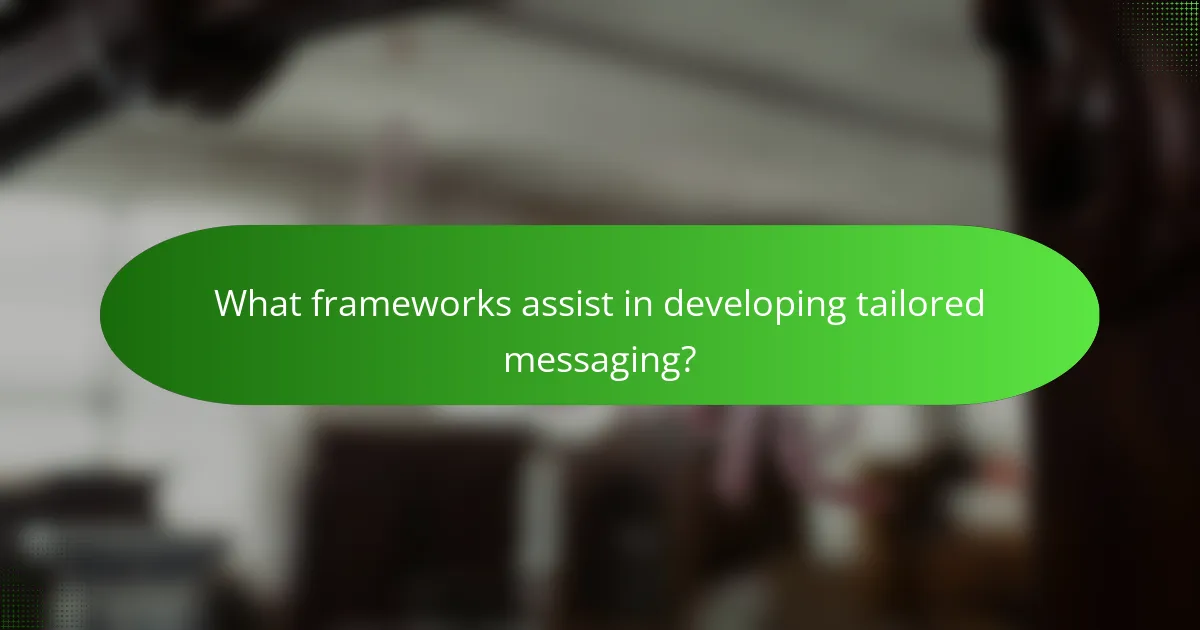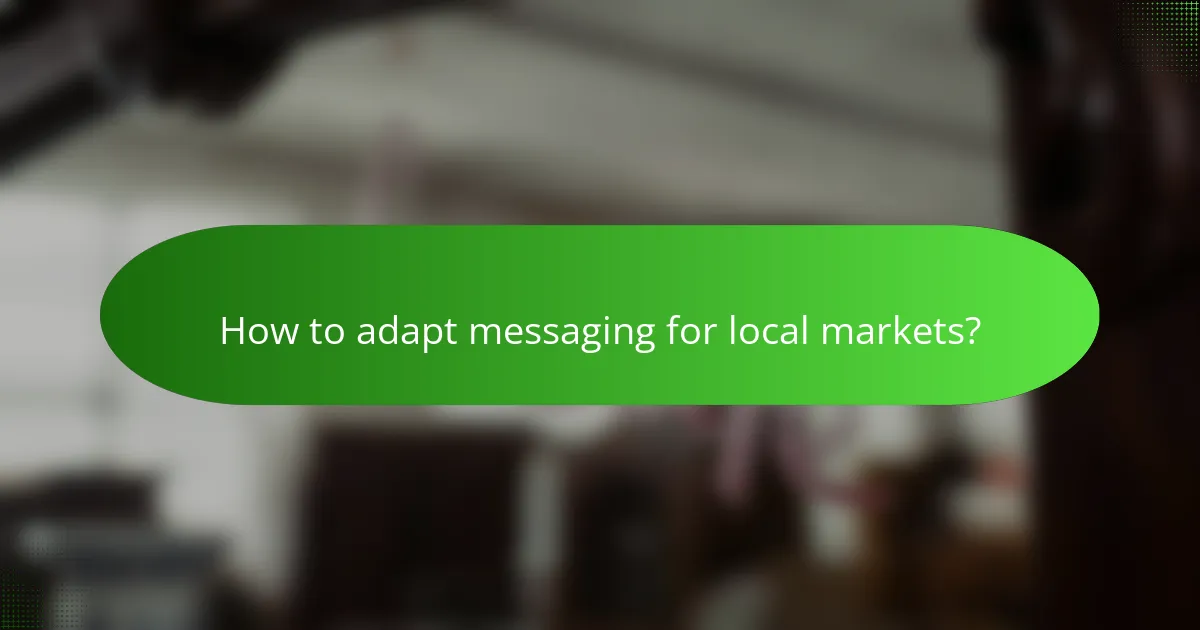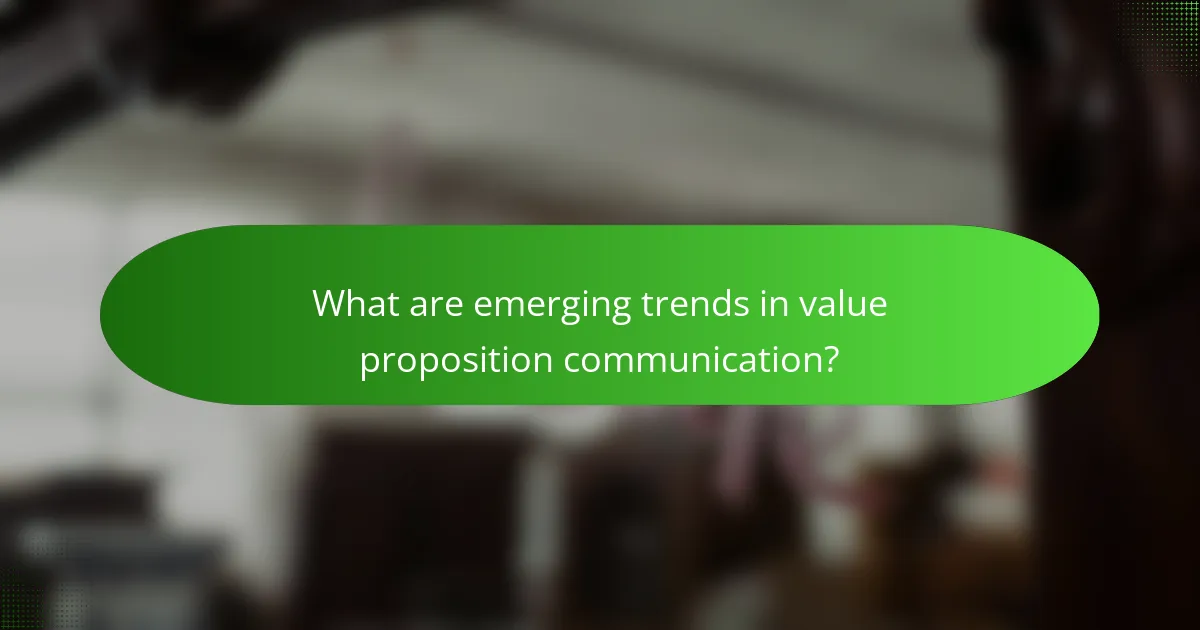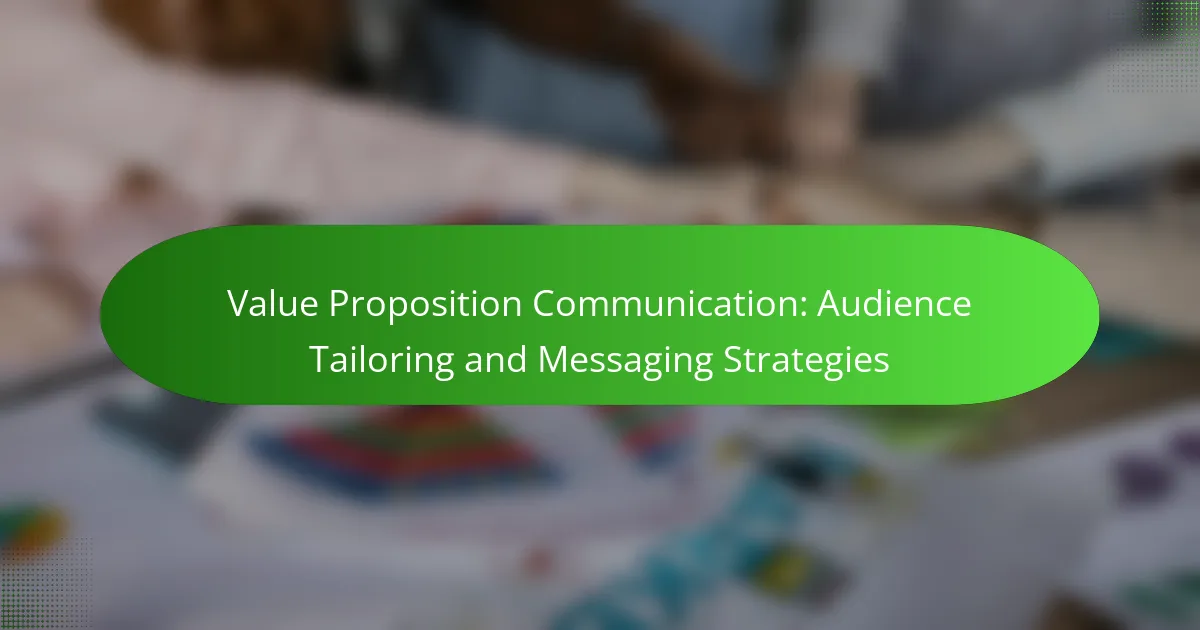Communicating a compelling value proposition requires a deep understanding of your audience’s unique characteristics and preferences. By segmenting audiences and adapting messaging strategies to align with their specific needs, you can enhance engagement and drive meaningful connections. Effective communication not only articulates the benefits of a product or service but also resonates on a personal level, ensuring that your message is both impactful and relevant.

How to tailor value propositions for diverse audiences?
To effectively tailor value propositions for diverse audiences, it’s essential to understand their unique characteristics and preferences. This involves segmenting audiences, utilizing psychographics, adapting language, and incorporating cultural nuances to ensure messaging resonates with each group.
Segmenting audiences by demographics
Demographic segmentation involves categorizing audiences based on characteristics such as age, gender, income, education, and location. For instance, a product aimed at young adults may emphasize trendiness and affordability, while a luxury item might focus on exclusivity and status for higher-income brackets.
When creating value propositions, consider using data analytics tools to identify demographic trends within your target market. This can help you tailor your messaging to specific groups, ensuring relevance and engagement.
Utilizing psychographics for messaging
Psychographics delve into the attitudes, values, interests, and lifestyles of your audience. Understanding these factors allows you to craft messages that resonate on a deeper emotional level. For example, eco-conscious consumers may respond better to value propositions highlighting sustainability and ethical sourcing.
To effectively utilize psychographics, conduct surveys or focus groups to gather insights about your audience’s motivations and preferences. This information can guide your messaging strategy, ensuring it aligns with their beliefs and desires.
Adapting language and tone
Adapting language and tone is crucial for effective communication with diverse audiences. Different groups may respond to varying levels of formality, jargon, or colloquialisms. For example, a tech-savvy audience may appreciate industry-specific terminology, while a general audience might prefer simpler language.
Test different messaging styles to see which resonates best with your audience. A/B testing can provide valuable insights into how language and tone affect engagement and conversion rates.
Incorporating cultural nuances
Cultural nuances play a significant role in how value propositions are perceived. This includes understanding local customs, values, and communication styles. For instance, humor may be well-received in some cultures but considered inappropriate in others.
Research cultural norms and preferences relevant to your target audience. Engaging local experts or conducting cultural sensitivity training can help ensure your messaging is respectful and effective across different cultural contexts.

What messaging strategies enhance value proposition communication?
Effective messaging strategies enhance value proposition communication by clearly articulating the benefits and unique aspects of a product or service. Tailoring messages to the target audience ensures that the communication resonates and drives engagement.
Utilizing storytelling techniques
Storytelling techniques create an emotional connection with the audience, making the value proposition more relatable. By framing the product or service within a narrative, businesses can illustrate how it solves problems or improves lives.
Consider using customer success stories or case studies that highlight real-life applications. This approach not only captivates attention but also makes the value proposition memorable.
Highlighting unique selling points
Identifying and emphasizing unique selling points (USPs) is crucial for distinguishing a product in a crowded market. USPs should focus on specific features, benefits, or experiences that competitors do not offer.
For example, if a software solution provides a user-friendly interface and 24/7 customer support, these aspects should be prominently featured in messaging. Clear articulation of USPs helps potential customers quickly understand why they should choose your offering over others.
Leveraging social proof and testimonials
Social proof, such as testimonials and reviews, builds trust and credibility for a value proposition. Potential customers are more likely to engage with a product that others have positively endorsed.
Incorporate quotes from satisfied customers or statistics showing high satisfaction rates. Displaying these endorsements prominently can significantly influence purchasing decisions and reinforce the value proposition.

How to measure the effectiveness of value proposition messaging?
To measure the effectiveness of value proposition messaging, focus on key performance indicators (KPIs) that reflect audience engagement and response. This includes analyzing metrics such as conversion rates, customer feedback, and the results of A/B testing to refine your messaging strategy.
Analyzing engagement metrics
Engagement metrics provide insights into how well your value proposition resonates with your audience. Key metrics to track include click-through rates (CTR), time spent on page, and conversion rates. For example, a CTR above 2% typically indicates effective messaging.
Use analytics tools to monitor these metrics regularly. Look for trends over time to identify which messages perform best and consider segmenting data by demographics to understand different audience responses.
Conducting A/B testing
A/B testing involves comparing two versions of your value proposition messaging to determine which is more effective. Create two variations of your message and present them to similar audience segments, then analyze which version leads to higher engagement or conversions.
When conducting A/B tests, ensure you have a clear hypothesis and sufficient sample size for reliable results. Aim for a testing period of at least one to two weeks to account for variations in audience behavior.
Gathering customer feedback
Customer feedback is essential for understanding the effectiveness of your value proposition messaging. Utilize surveys, interviews, and focus groups to gather qualitative insights directly from your audience. Ask specific questions about what resonates with them and what could be improved.
Consider implementing feedback tools on your website, such as pop-up surveys or feedback forms, to capture real-time responses. Analyze this feedback to identify common themes and adjust your messaging accordingly for better alignment with customer expectations.

What frameworks assist in developing tailored messaging?
Several frameworks can help in creating tailored messaging that resonates with specific audiences. These frameworks guide the understanding of customer needs and preferences, ensuring that communication is relevant and impactful.
Value Proposition Canvas
The Value Proposition Canvas is a tool designed to align your product’s features with customer needs. It consists of two main sections: the customer profile and the value map. The customer profile outlines customer jobs, pains, and gains, while the value map details how your product addresses these elements.
To effectively use this canvas, start by identifying key customer segments and their specific needs. For example, if targeting small business owners, focus on how your service saves time and reduces costs. Regularly update the canvas as you gather feedback to ensure your messaging remains relevant.
Customer Journey Mapping
Customer Journey Mapping visualizes the steps a customer takes from awareness to purchase and beyond. This framework helps identify touchpoints where tailored messaging can enhance the customer experience. By understanding the journey, businesses can create targeted content that addresses customer concerns at each stage.
When creating a customer journey map, consider factors like customer emotions, motivations, and potential obstacles. For instance, if a customer feels overwhelmed during the decision-making phase, messaging should focus on simplifying choices and providing clear comparisons. Regularly review and adjust the map based on customer feedback to keep your messaging aligned with their evolving needs.

How to adapt messaging for local markets?
Adapting messaging for local markets involves understanding cultural nuances and consumer preferences to ensure effective communication. Tailoring your message can significantly enhance engagement and conversion rates by resonating with the target audience’s values and expectations.
Researching local consumer behavior
Understanding local consumer behavior is crucial for effective messaging. This involves analyzing purchasing patterns, cultural influences, and social norms that affect how consumers perceive products and services. Utilize surveys, focus groups, and market analysis to gather insights specific to the region.
Consider factors such as age demographics, income levels, and lifestyle choices, as these can vary widely between different locales. For instance, a product that appeals to younger consumers in urban areas may not resonate with older populations in rural settings.
Customizing offers for regional preferences
Customizing offers to align with regional preferences can enhance the appeal of your messaging. This may include adjusting product features, pricing strategies, or promotional tactics to suit local tastes and expectations. For example, food products might need to cater to local dietary restrictions or flavor preferences.
Additionally, consider seasonal variations and local events that can influence buying behavior. Offering special promotions during local festivals or holidays can create a sense of relevance and urgency. Always test different approaches to find what resonates best with the local audience.

What are emerging trends in value proposition communication?
Emerging trends in value proposition communication focus on personalization and sustainability, reflecting changing consumer expectations. Brands are increasingly tailoring their messages to resonate with individual preferences while also addressing environmental concerns.
Personalization through AI
Personalization through AI involves using data analytics and machine learning to create tailored experiences for consumers. By analyzing customer behavior, preferences, and demographics, businesses can craft messages that speak directly to the needs and desires of their target audience.
For example, e-commerce platforms often utilize AI to recommend products based on previous purchases or browsing history. This approach can increase engagement and conversion rates significantly, as personalized experiences are more likely to resonate with consumers.
To effectively implement AI-driven personalization, companies should ensure they have robust data collection methods in place while respecting privacy regulations. Avoid over-personalization, which can lead to consumer discomfort or distrust.
Incorporating sustainability messaging
Incorporating sustainability messaging into value propositions is becoming essential as consumers increasingly prioritize eco-friendly practices. Brands that communicate their commitment to sustainability can differentiate themselves and build trust with environmentally conscious customers.
For instance, companies can highlight their use of recycled materials, ethical sourcing, or carbon-neutral shipping options. This not only appeals to a growing market segment but also aligns with global sustainability goals.
When integrating sustainability into messaging, it’s crucial to be transparent and authentic. Avoid greenwashing by providing clear evidence of sustainable practices and setting measurable goals. This builds credibility and fosters long-term customer loyalty.
